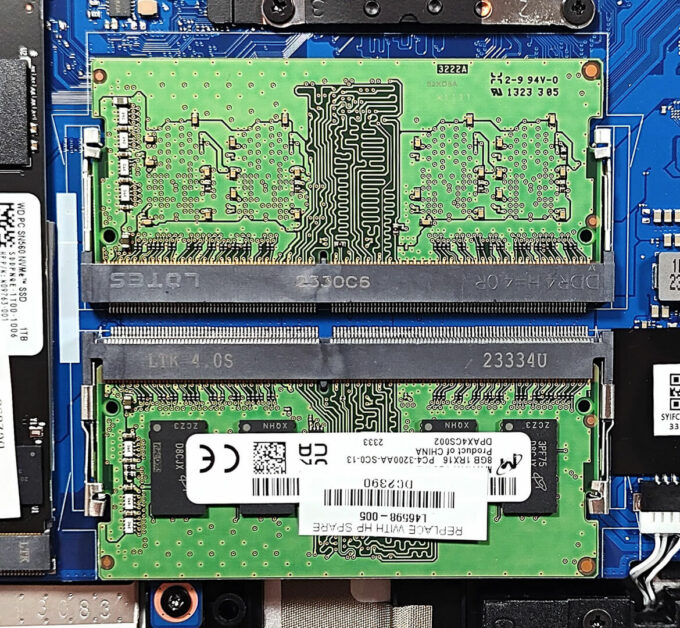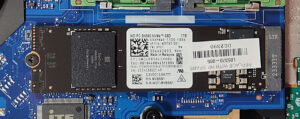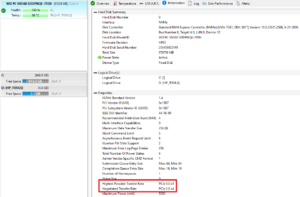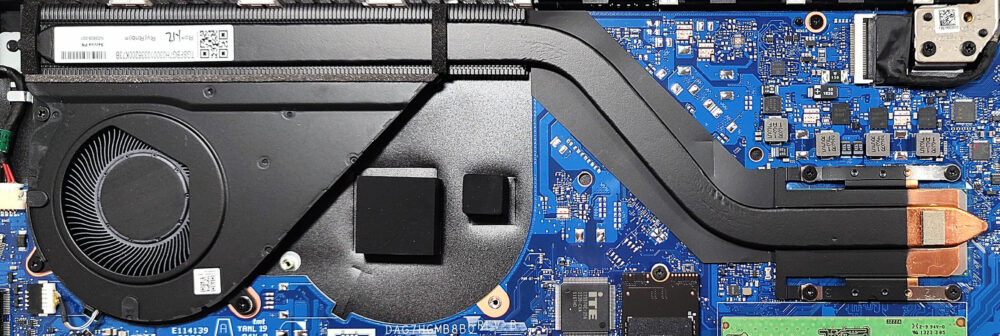How to open HP Pavilion 15 (15-eg3000) – disassembly and upgrade options
Step 1: Accessing the Internal Components
- Ensure the HP Pavilion 15 (15-eg3000) is powered off and placed on a soft, clean surface to prevent scratches or damage.
- Remove the six Phillips-head screws from the bottom of the laptop. This includes two visible screws and four hidden beneath the two long rubber feet, which you will need to carefully unglue to access.
- Create a gap by lifting the bottom plate near one of the top corners, then use a thin plastic tool to pry the plate off the base.
Hint: Proceed with caution when prying to avoid damaging the internal clips or the laptop casing.
Step 2: Removing the Battery
- Wear gloves to safely disconnect the built-in battery connector and avoid short circuits.
- Remove the six Phillips-head screws securing the battery to the chassis, then lift the 41Wh battery away from the device.
Caution: Ensure you’re grounded when handling the battery to prevent any electrical damage.
More info: The 41Wh battery offers up to 8 hours and 20 minutes of web browsing or 6 hours and 15 minutes of video playback, providing solid battery life for daily use.
Memory Upgrade
- Locate the two SODIMM slots available for memory upgrades.
- Install up to 16GB of DDR4-3200 MHz RAM in dual-channel mode to enhance the laptop’s multitasking capabilities.
Hint: Ensuring both RAM slots are filled can optimize the laptop’s performance through dual-channel mode.
You can buy DDR4 RAM modules here: Buy from Amazon.com (#CommissionsEarned)
Storage Upgrade
- Find the single M.2 slot on the motherboard that supports 2280 Gen 4 SSDs.
- Upgrade or add a new NVMe SSD as needed, though note the SSD speed will be limited to Gen 3 values.
More info: A thermal pad beneath the preinstalled NVMe helps manage heat, ensuring sustained performance.
You can buy Gen 3 M.2 SSD modules here: Buy from Amazon.com (#CommissionsEarned)
Step 3: Examining the Cooling System
- Inspect the cooling system, which includes a single fan, a long heat pipe, one extra-large heat sink, and a heat spreader, designed to efficiently manage the thermal output of the laptop.

















